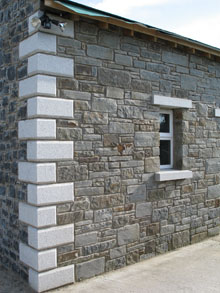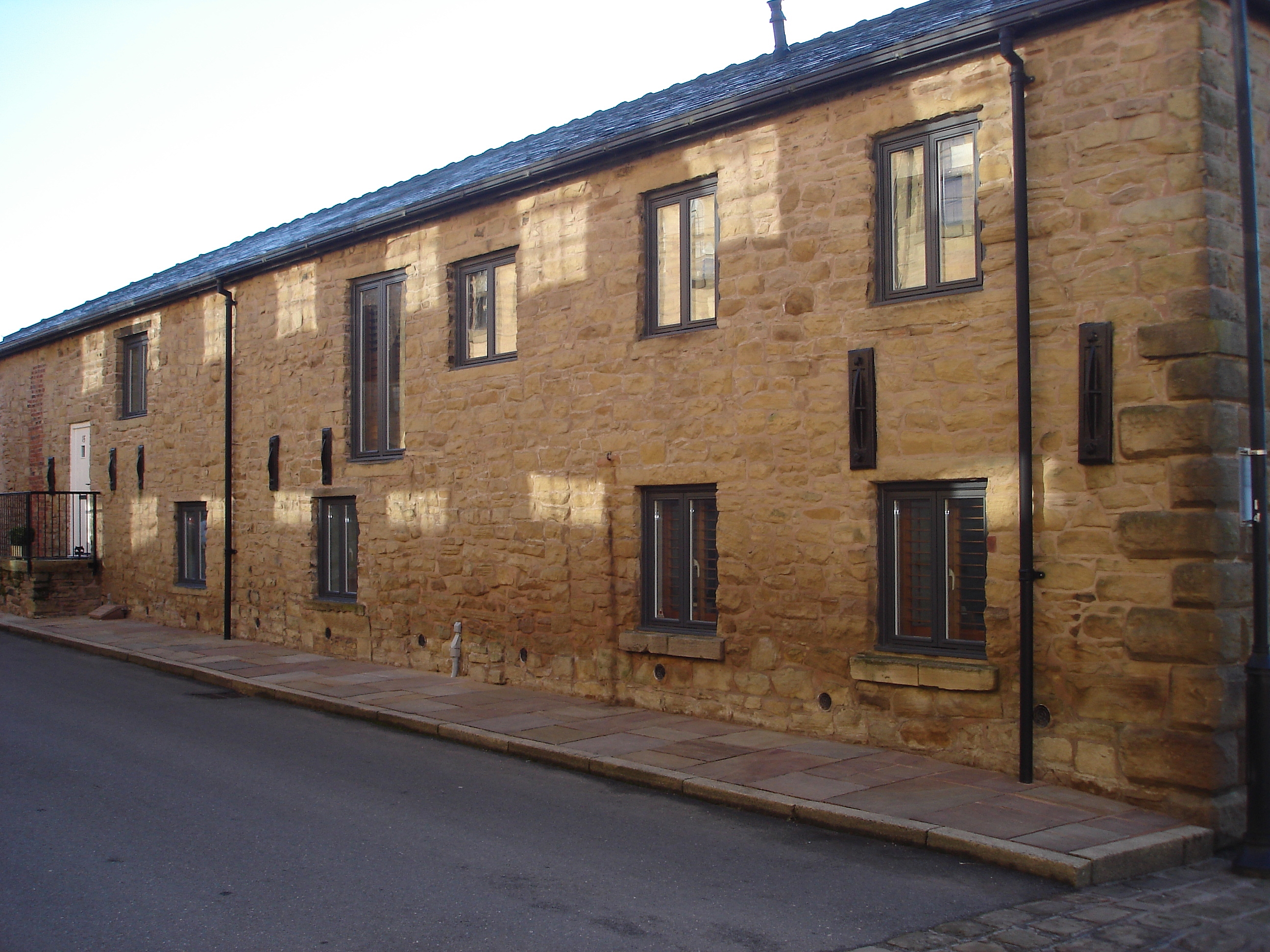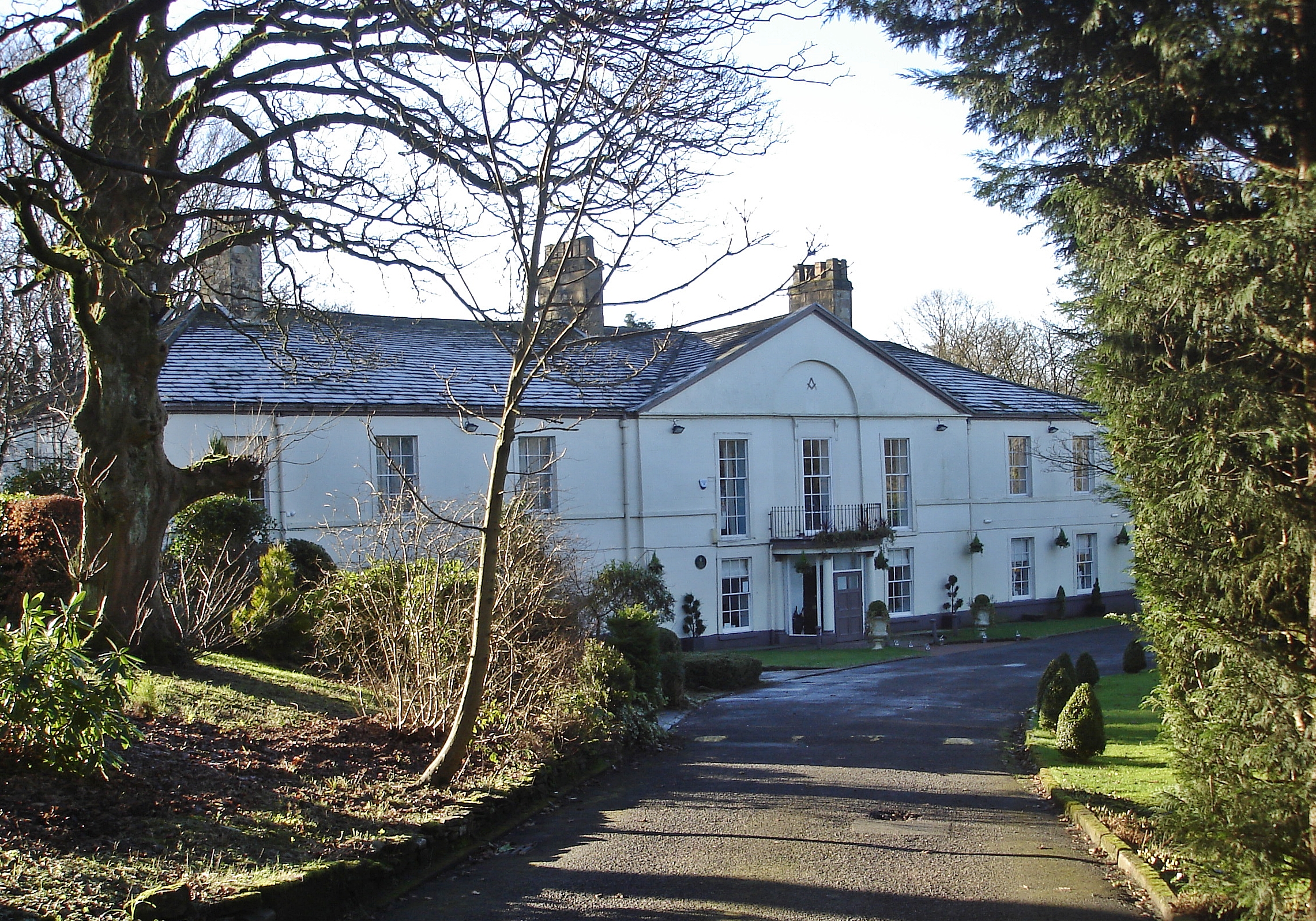Wallsuches Bleachworks takes its name from an area north of Chorley Old Road to the east of Horwich in Greater Manchester, England. The area is notable for the bleachworks started by Thomas Ridgway in 1777. Wallsuches was developed at the start of the Industrial Revolution when Horwich was a small rural community, and was an important factor in the town’s growth at its eastern side.
Background
The etymology of the place-name Wallsuches is unclear, but may be from the Old English wella meaning a stream and soc to soak because of the several streams running through the area. Before the Ridgway family started their works in the 1770s, Horwich was a small subsistence farming community where incomes were supplemented by handloom weaving.[1] The locally woven cloth was washed in stream water running off the moor. Bleaching required water, sour milk and urine and the cloth was then stretched on tenterhooks in the fields to dry in the sun.[2]
Thomas Ridgway came to Wallsuches after his bleach works in Bolton was destroyed in a fire in 1775. He chose the site on the road from Horwich to Bolton, Chorley Old Road, because of the availability of land with streams to provide water power.[3] In 1777 Thomas Ridgway and Sons’ bleachworks opened bringing employment to Horwich and the surrounding villages. By 1780 other buildings had been added to the bleach works which was powered by six water wheels. Thomas Ridgway pioneered the chemical bleaching process using chlorine that was used on a large scale at Wallsuches.[4]
Bleachworks
Wallsuches was developed in stages starting in 1777, in 1828, and some buildings have date stones from 1840, 1858 and 1873. The oldest buildings are at the centre and north west of the site and later developments are on the south east. The bleachworks were built in coursed gritstone with quoins 
Any external angle or corner of a structure.at the corners and had stone and slate roofs. Gingham House, a five-storey building built by Ridgway in 1798 was powered by a 10-horse power steam engine by Boulton and Watt that turned mangles and calendars.(hollow cylinders heated with irons for finishing the cloth).[3][4]
Water for bleaching was provided from reservoirs and filter beds on three sides of the site. Ponds to the north may date from the 1828 expansion. The1845 Ordnance Survey map records another Wallsuches site to the west, which was probably where chlorine gas and bleaching liquor were produced.[3]
After Ridgway’s death in 1816, the business was continued by his sons, Joseph and Thomas. Thomas Bridson, who married Thomas Ridgway’s daughter, was a partner from 1818 until the early 1830s when he took over the Lever Bank Bleachworks. Charles and Christopher Howarth, former employees, took over in the mid 19th century and Joseph Howarth sold the business to The Bleachers’ Association in 1900.[3][4]
The bleachworks was one of the main industries in Horwich until 1933. After the works closed the site became derelict and run-down. Arcon Engineering took over part of the site in 1950[5] and the North West Water Authority (United Utilities) took over the reservoir. The area has since been developed for housing by Redrow, incorporating the Grade II listed buildings.[3]
Industrial community
The Ridgways lived across the road from the works in a house called “Whitehouse”, which they renamed “Ridgmont House”.[6] They were considered to be good employers, and also contributed to building the church school in 1793 and re-building the church in 1830.[7] The industrial community associated with the works is known as the “Club Houses”. Rows of stone-built cottages were built near the church, after the Ridgways started a building club so that their employees could buy or rent their own homes.[2][8] In 1851 the community had 151 houses.[4]




